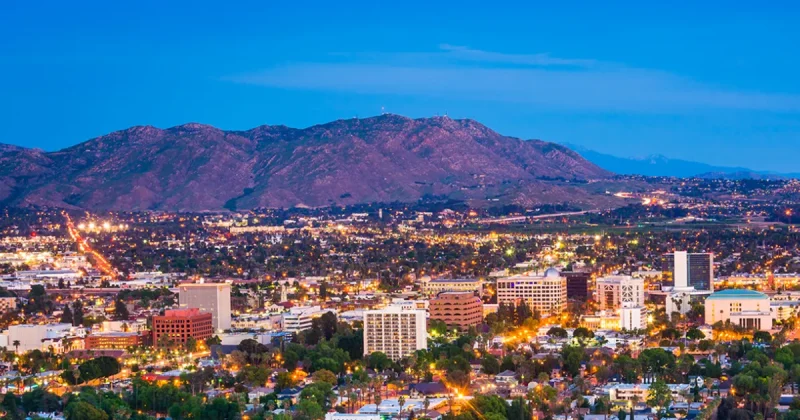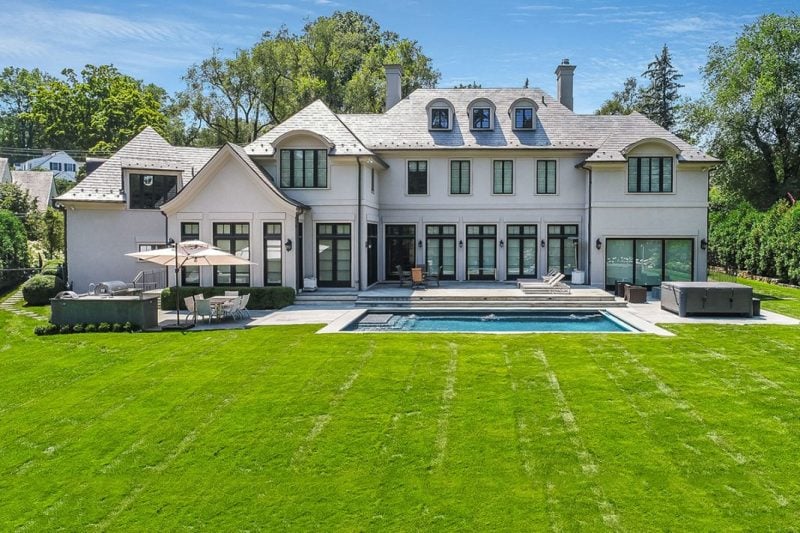The 30 Cheapest Places to Live in Wyoming: Affordable Cities and Towns

Wyoming offers numerous communities where residents can enjoy a lower cost of living while experiencing the state’s distinctive western lifestyle.
From larger cities to small rural towns, the state provides affordable housing options and reduced living expenses compared to many other regions across the United States.
Finding the right affordable community in Wyoming requires understanding how factors like housing costs, utilities, and local amenities vary significantly between different cities and towns throughout the state.
Each location presents unique advantages, whether through proximity to natural attractions, employment opportunities, or community resources that can impact overall living expenses and quality of life.
Here are the 30 cheapest places to live in Wyoming:
1. Rock Springs
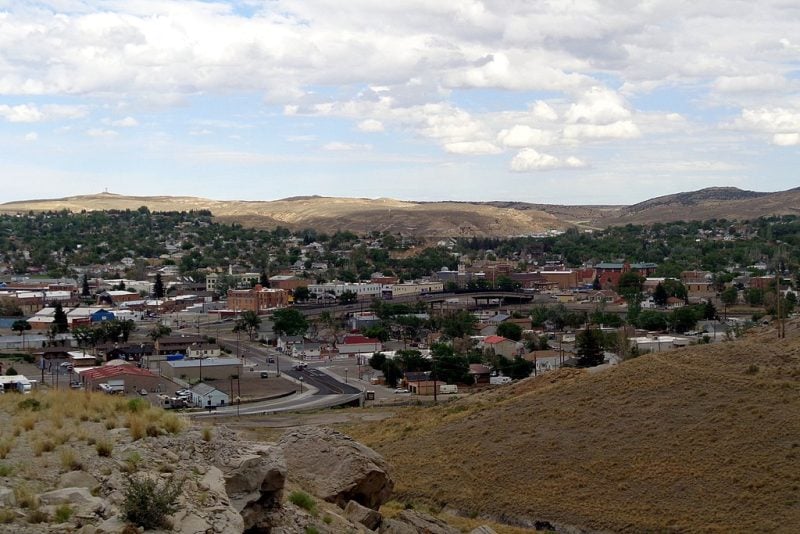
Rock Springs ranks as Wyoming’s most affordable place to live. The median home value sits at $286,559, making homeownership accessible for many residents.
Rental costs remain well below national averages. Two-bedroom apartments rent for approximately $870 per month, which is 39.2% cheaper than the national average of $1,430.
The housing market offers diverse options for renters. Apartments start as low as $500 monthly, with developments like Village at Silver Ridge and White Mountain providing affordable choices.
Rock Springs provides residents with ample housing selections. The city features numerous apartments and houses available for rent, giving newcomers flexibility in finding suitable accommodations within their budget range.
2. Casper
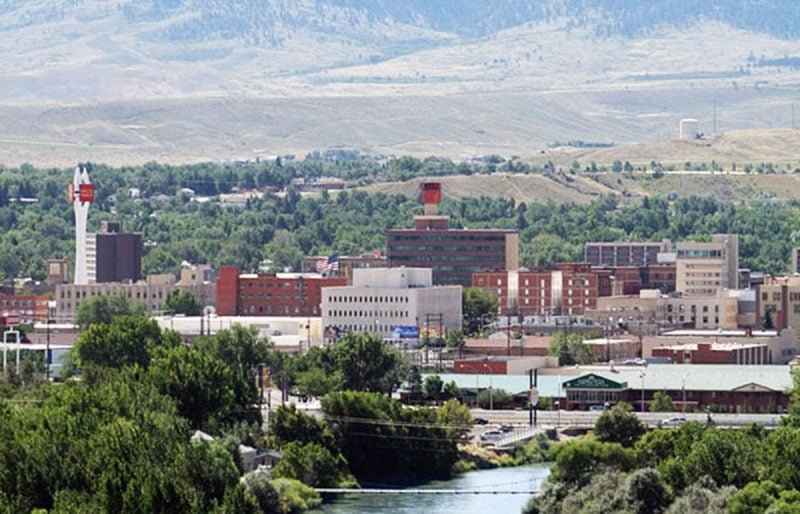
Casper stands as Wyoming’s second-largest city and one of its most affordable places to live. The city offers a cost of living approximately 14% lower than the national average.
With a population just under 60,000, Casper provides urban amenities without big city expenses. The median home price sits at $294,331, making homeownership accessible for many families.
The local job market shows strength in education, healthcare, and technology sectors. These industries provide stable employment opportunities for residents.
Housing costs remain significantly lower than in premium Wyoming locations like Jackson. This affordability extends beyond housing to include utilities, groceries, and healthcare services.
Casper’s size allows residents to access restaurants, shopping, and cultural activities while maintaining reasonable living expenses. The city balances economic opportunity with affordable daily costs.
3. Cheyenne
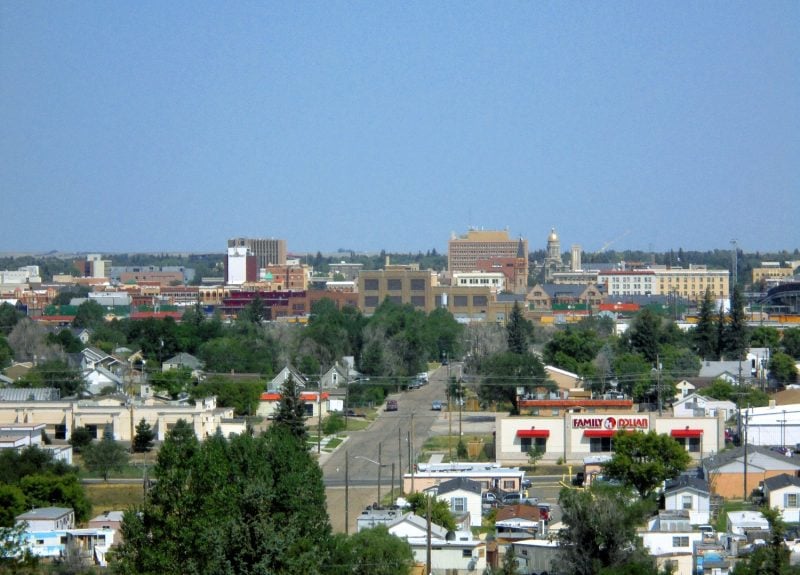
Cheyenne serves as Wyoming’s capital and largest city, offering residents urban amenities at affordable prices. The city maintains lower living costs compared to many state capitals across the United States.
Housing costs in Cheyenne remain reasonable for a capital city. Renters find various options from downtown apartments to suburban homes. The median home prices stay below national averages.
Employment opportunities exist through state government positions and local businesses. The city hosts the famous Frontier Days celebration, attracting visitors annually. Transportation costs benefit from Wyoming’s lack of state income tax.
Grocery prices and utilities typically run lower than in larger metropolitan areas. Cheyenne provides access to healthcare facilities and educational institutions. The city combines small-town charm with necessary urban services for residents.
4. Gillette
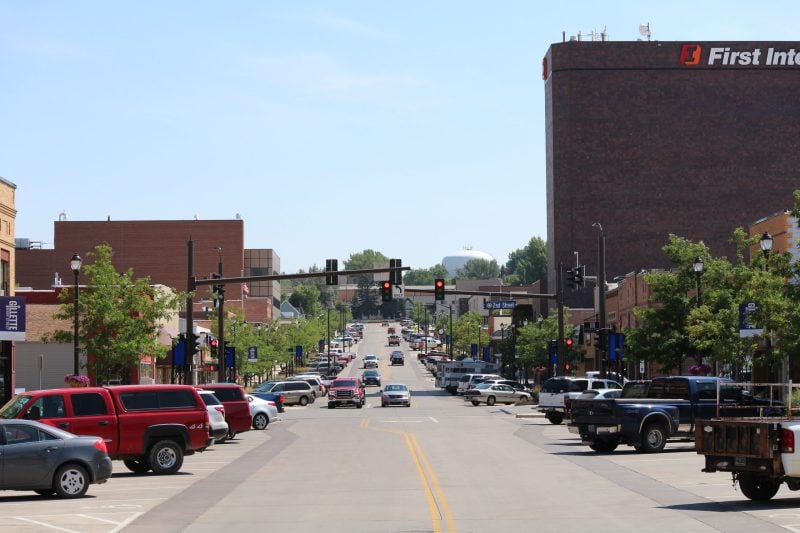
Gillette offers affordable housing options with a median home price of $244,175. This falls below Wyoming’s state average of $294,307, making it an attractive option for homebuyers.
Rental costs in Gillette average $962 per month. The city’s affordability stems from current real estate values in the area.
The 82718 zip code ranks as Wyoming’s 14th cheapest housing market. Median home values in this area reach $379,532, while average rents sit at $1,325 monthly.
Gillette provides recreational amenities including the Campbell County Recreation Center and Bicentennial Park. These facilities add value for residents seeking affordable living with community resources.
The city’s housing market offers opportunities for both renters and buyers. Lower costs compared to state averages make Gillette a practical choice for budget-conscious individuals and families.
5. Laramie
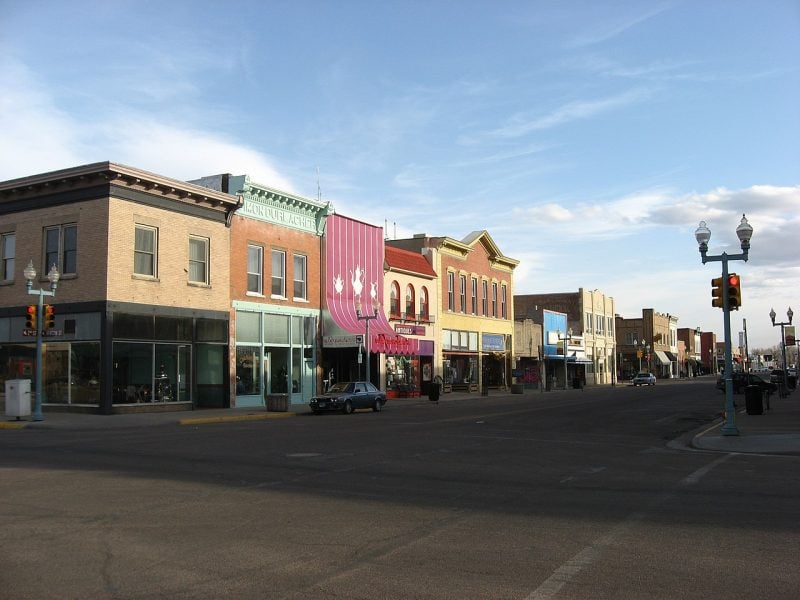
Laramie offers affordable living with a median home price of $219,836, well below Wyoming’s average of $294,307. The average rent costs $844 per month, making it accessible for various budgets.
The city maintains a cost of living score of 93.5, which is 6.5% lower than the national average. This translates to savings on housing, food, transportation, and other necessities.
Laramie combines small-town charm with city amenities. The University of Wyoming’s presence creates a vibrant downtown atmosphere with consistent activity.
The city sits in central Wyoming surrounded by scenic landscapes. Residents enjoy both the welcoming community feel and access to educational and cultural opportunities through the university.
6. Riverton
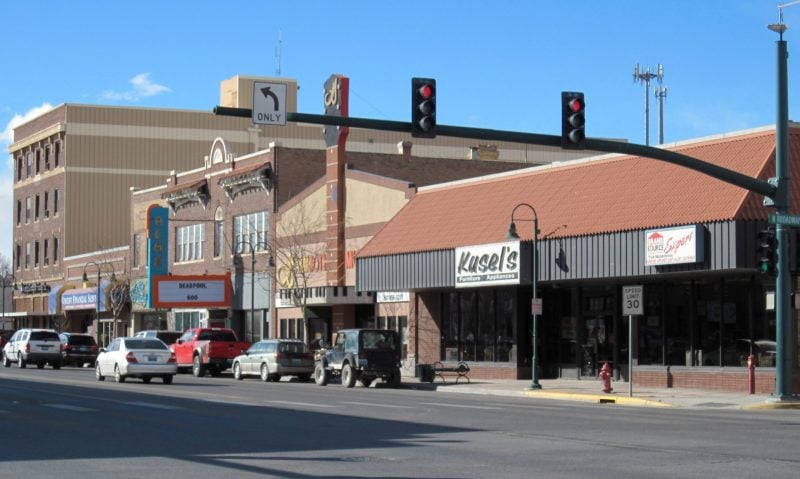
Riverton offers residents affordable living costs in central Wyoming. The median home price sits at $215,069, which falls below the state average of $294,307.
Monthly rent averages $901 in the area. This makes housing costs manageable for many residents seeking budget-friendly options.
The city has a population of approximately 10,913 people. The typical household earns $50,408 annually, lower than the national median income.
Riverton maintains a poverty rate of 13.6%. This rate runs about 3% below the national average, indicating reasonable economic stability for residents.
The city consistently appears on lists of Wyoming’s most affordable places to live. Multiple sources rank Riverton among the top budget-friendly destinations in the state for 2025.
7. Sheridan
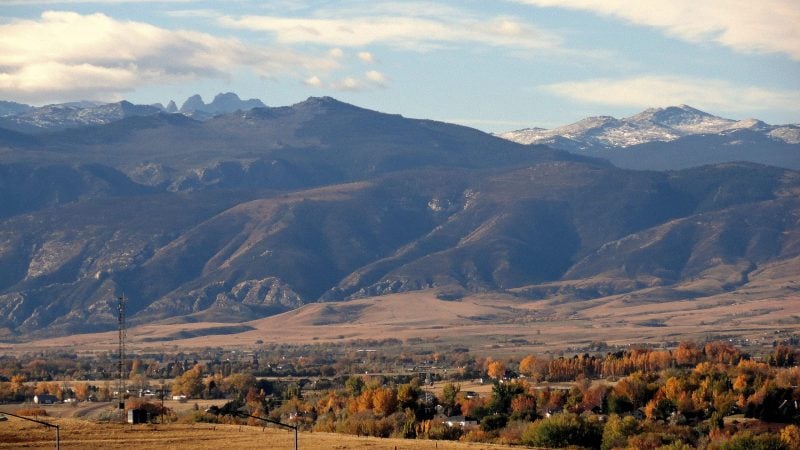
Sheridan offers affordable living options in north-central Wyoming. The city maintains lower housing costs compared to many Wyoming communities.
Residents benefit from reasonable rental prices and home values. The local real estate market provides opportunities for budget-conscious buyers and renters.
Sheridan’s cost of living remains manageable for families and individuals. Basic necessities like groceries and utilities stay within reasonable ranges.
The city features a stable economy supported by agriculture, energy, and healthcare sectors. These industries provide employment opportunities for residents.
Sheridan combines affordability with access to outdoor recreation. The nearby Bighorn Mountains offer hiking, fishing, and camping activities.
Downtown Sheridan maintains historic charm with local businesses and restaurants. The community provides essential services without the high costs of larger cities.
Transportation costs remain low due to the city’s compact size. Most daily needs are accessible within short distances.
8. Evanston
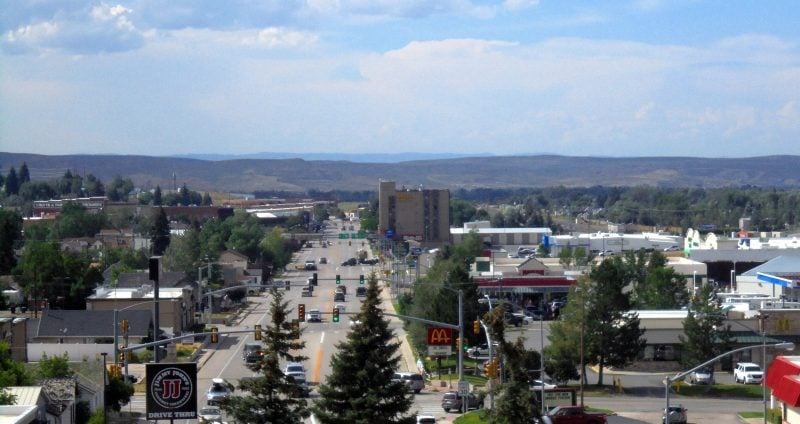
Evanston sits in southwestern Wyoming as the county seat of Uinta County. The city has approximately 11,800 to 12,359 residents.
Housing costs remain notably affordable in this community. The median home sale price is about $275,000 less than Wyoming’s state average. Some sources report average home values around $169,400 compared to the state average of $220,500.
Rental options also provide budget-friendly choices. A two-bedroom apartment costs around $830 per month. This represents a 42% savings compared to national averages and 10.8% below state rental costs.
The recommended minimum annual income is $47,880 for families and $25,200 for single residents. Evanston offers residents a blend of affordable housing, reasonable grocery prices, and economical utilities.
The town maintains its western heritage while providing modern amenities for residents seeking affordable Wyoming living.
9. Green River
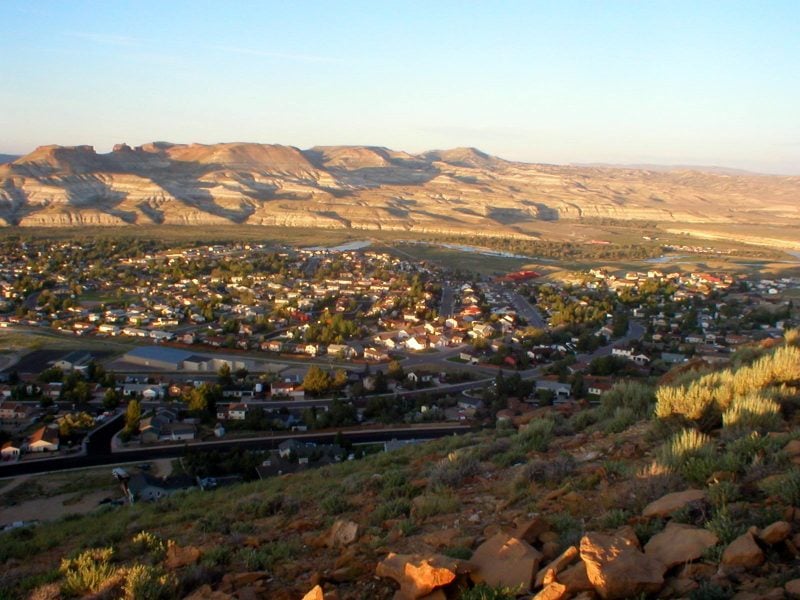
Green River offers affordable housing options that make it attractive to budget-conscious residents. The median home value in the 82935 zip code stands at $291,865, ranking as Wyoming’s fourth-cheapest housing market.
Rental costs average $1,515 per month for those preferring to lease. The median listing price reached $269,900 in March 2024, positioning it among the state’s most affordable communities.
The city provides cost-effective residences while maintaining a strong sense of community. Green River’s location next to Rock Springs offers access to Memorial Hospital of Sweetwater County for healthcare needs.
Outdoor enthusiasts appreciate the area’s excellent fishing opportunities throughout the year. Safety ranks high as well, with Green River recognized as Wyoming’s fifth-safest city according to recent data.
10. Torrington
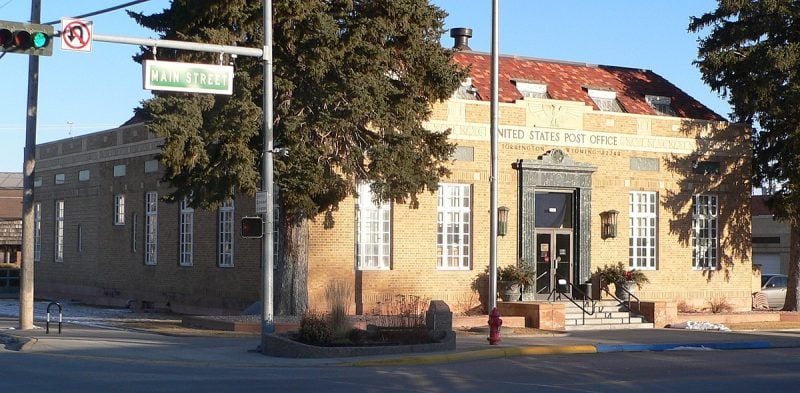
Torrington ranks as one of Wyoming’s most affordable cities, with a cost of living approximately 5% below the state average. The median home price sits at $188,843, significantly lower than Wyoming’s average of $294,307.
Rental costs remain reasonable at $715 per month. This makes Torrington attractive for both homebuyers and renters seeking budget-friendly options.
Located in eastern Wyoming, Torrington serves as the county seat of Goshen County. The city offers more amenities than many other affordable Wyoming towns while maintaining low living costs.
Housing values have shown strong growth patterns over recent years. Despite this appreciation, Torrington continues to provide accessible entry points into Wyoming’s real estate market.
The combination of affordable housing, reasonable rental rates, and small-town amenities positions Torrington as a practical choice for residents prioritizing cost savings.
11. Douglas
Douglas stands out as an affordable option in central Wyoming with a median home price of $241,927. This figure sits below the state average of $294,307, making homeownership more accessible.
Rental costs in Douglas average $721 per month. The pricing reflects the current real estate market conditions in the area.
The city hosts the annual Wyoming State Fair, bringing cultural events to residents. Douglas maintains a reputation as a family-friendly community with clean neighborhoods.
Safety ranks high among resident priorities in Douglas. The town offers a quiet atmosphere while providing access to Wyoming’s outdoor recreational opportunities.
Finding affordable housing in Douglas has become more challenging recently. However, the city continues to offer better value compared to many Wyoming locations.
12. Cody
Cody offers residents a blend of Western charm and reasonable living costs in northwestern Wyoming. The city sits near Yellowstone National Park’s east entrance, providing stunning natural scenery without the premium prices of resort towns.
Housing costs in Cody remain more affordable than many Wyoming destinations. The median home prices typically fall below state averages, making homeownership accessible for middle-income families.
The local economy benefits from tourism, agriculture, and energy sectors. This economic diversity helps stabilize employment opportunities throughout the year.
Residents enjoy access to outdoor recreation including hiking, fishing, and wildlife viewing. The famous Buffalo Bill Center of the West adds cultural value to the community.
Grocery and utility costs align with statewide averages. Healthcare services are readily available through local medical facilities, keeping essential living expenses manageable for most households.
13. Moyle
Moyle is a small unincorporated community located in Lincoln County, Wyoming. The town sits in the western part of the state near the Idaho border.
Housing costs in Moyle remain significantly below Wyoming’s state averages. The rural location and limited population keep property values affordable for residents.
The community offers basic amenities with a quiet, rural lifestyle. Residents typically commute to nearby larger towns for employment and shopping needs.
Moyle’s location provides access to outdoor recreation opportunities. The surrounding area features hiking trails, fishing spots, and hunting grounds.
The cost of living stays low due to the town’s remote location and small size. Utilities and everyday expenses tend to be reasonable compared to urban areas in Wyoming.
This community appeals to those seeking affordable rural living with mountain views and outdoor access.
14. Buffalo
Buffalo sits in the foothills of the Bighorn Mountains in Johnson County. The town offers affordable housing options with median home prices well below the national average.
Residents enjoy low property taxes and reasonable utility costs. The local economy centers around agriculture, tourism, and small businesses serving the surrounding rural area.
Buffalo provides essential amenities including grocery stores, healthcare facilities, and schools. The town maintains a historic downtown district with local shops and restaurants.
Outdoor recreation opportunities abound with nearby mountains offering hiking, hunting, and fishing. The area attracts visitors to the historic Occidental Hotel and local museums.
The cost of living remains manageable due to lower housing costs and reduced commercial rent prices. Buffalo appeals to those seeking small-town living with mountain access at affordable rates.
15. Rawlins
Rawlins stands out as one of Wyoming’s most affordable housing markets. The median home price sits at $198,155, significantly below the state average of $294,307.
Renters find reasonable options with average monthly costs around $745. This makes housing accessible for various income levels.
The city offers a peaceful, family-friendly atmosphere with historic attractions. The Wyoming Frontier Prison and Carbon County Museum provide local points of interest.
Residents appreciate the small-town feel and safety that Rawlins provides. Families particularly value the secure environment for children.
The combination of below-average housing costs and community amenities makes Rawlins attractive for budget-conscious residents. The town maintains its historic charm while offering practical affordability benefits.
16. Worland
Worland ranks as one of Wyoming’s most affordable places to live with a cost of living index 8% below the state average. The city sits along the Big Horn River in northwestern Wyoming.
Housing costs in Worland remain notably low compared to other Wyoming cities. Residents also benefit from budget-friendly grocery prices and affordable utility rates.
The city has a population of approximately 5,100 residents. The median household income is $54,928, which falls below the national average of $67,500.
Worland’s poverty rate stands at 13.9%, slightly lower than the national average. The area provides access to economical healthcare services alongside its other cost advantages.
The location offers scenic river views and a peaceful small-town atmosphere. Worland combines affordability with natural beauty in northwestern Wyoming’s landscape.
17. Pine Bluffs
Pine Bluffs offers residents a relatively low cost of living that makes it an affordable place to call home. The small town maintains housing costs below Wyoming’s state average of $294,307.
Located in Laramie County near the Nebraska border, Pine Bluffs provides a friendly atmosphere and close-knit community feel. The town’s population remains small, contributing to its affordable housing market.
Residents enjoy year-round recreational opportunities with miles of hiking and biking trails available nearby. Wildlife and bird watching activities add to the area’s natural appeal.
The town’s lower housing demand in this less populated area helps keep costs manageable for potential residents. Pine Bluffs combines affordability with outdoor recreation access for those seeking small-town living in Wyoming.
18. Thermopolis
Thermopolis ranks among Wyoming’s most affordable places to live, consistently appearing on cheapest city lists. This small town has a population of approximately 2,703 residents.
The city serves as the county seat of Hot Springs County. Thermopolis translates to “hot city” in Greek, reflecting its famous natural hot springs.
Housing costs remain well below national averages. A two-bedroom rental unit costs around $750 monthly, which is 47.6% cheaper than the national average of $1,430.
The typical household earns $53,162 annually, below the national median of $67,500. The poverty rate sits at 15.2%, which is higher than the national average.
Thermopolis is home to the Wyoming Dinosaur Center. The town’s economy benefits from tourism related to its hot springs and attractions.
19. Jackson
Jackson stands out as one of Wyoming’s most expensive places to live rather than its cheapest. The median home price reaches $974,564, significantly higher than Wyoming’s average of $294,307.
Rental costs average $1,575 per month in Jackson. These high prices stem from the area’s desirability and proximity to Jackson Hole ski resort and Grand Teton National Park.
Finding affordable housing in Jackson presents considerable challenges for most residents. The city’s economy relies heavily on tourism and outdoor recreation, which drives up real estate values.
Some neighborhoods like Rafter J Ranch and West Jackson offer relatively more affordable options within the area. However, even these budget-friendly locations remain expensive compared to other Wyoming cities.
Jackson’s high cost of living reflects its status as a premier destination rather than an affordable place to settle.
20. Lingle
Lingle is a small town in Goshen County, Wyoming, with a population of around 500 residents. The community offers rural living with significantly lower housing costs compared to Wyoming’s larger cities.
Housing prices in Lingle remain well below the state average. Residents can find affordable single-family homes and rental properties that fit modest budgets.
The town provides basic amenities including a post office, local businesses, and community services. Lingle maintains a quiet, small-town atmosphere that appeals to those seeking simple living.
Located in southeastern Wyoming, Lingle sits near the Nebraska border. The town offers easy access to regional employment opportunities in nearby communities.
Utility costs and property taxes remain reasonable due to the town’s rural location. Residents benefit from Wyoming’s lack of state income tax, which helps stretch household budgets further.
21. Newcastle
Newcastle sits near the South Dakota border in eastern Wyoming. The town offers residents affordable living options with reasonable housing costs.
The median home value in Newcastle is $121,600. This price point makes homeownership accessible for many families and individuals.
The average income for residents is $59,535. This income level provides a decent standard of living given the area’s lower cost structure.
Newcastle’s location in eastern Wyoming provides access to regional amenities. The town maintains a small community atmosphere while keeping living expenses manageable.
Housing costs remain below state and national averages. Residents benefit from affordable utilities and reasonable property taxes.
The town attracts people seeking budget-friendly living without sacrificing quality of life. Newcastle’s proximity to the South Dakota border offers additional shopping and employment opportunities across state lines.
22. Sundance
Sundance sits in northeastern Wyoming near the Black Hills of South Dakota. The town has a population of around 1,200 residents.
Housing costs remain notably lower than Wyoming’s larger cities. Rental properties and home purchases offer affordable options for families and individuals.
The local economy relies on agriculture, tourism, and small businesses. Residents benefit from lower property taxes compared to urban areas.
Sundance provides access to outdoor recreation including hiking and fishing. The town sits close to Devils Tower National Monument.
Basic amenities include grocery stores, medical facilities, and schools. The cost of utilities and everyday expenses stays reasonable for most households.
The community maintains a small-town atmosphere with local events and gatherings. Winter weather can be harsh but living expenses remain manageable year-round.
23. Alpine
Alpine sits in western Wyoming near the Idaho border at the confluence of the Snake and Greys rivers. The town serves as a gateway to the Greater Yellowstone Ecosystem.
Housing costs in Alpine remain moderate compared to nearby Jackson. Most residents find rental options and starter homes within reasonable price ranges.
The local economy relies on tourism, outdoor recreation, and small businesses. Employment opportunities exist in hospitality, retail, and seasonal work.
Alpine offers access to world-class fishing, hunting, and hiking. The Palisades Reservoir provides water recreation during summer months.
Grocery stores and basic services are available locally. Residents drive to Jackson or Idaho Falls for major shopping and specialized services.
The community maintains a small-town atmosphere with fewer than 1,000 residents. Winter brings snow and cold temperatures typical of mountain regions.
24. Pinedale
Pinedale offers affordable housing options compared to many Wyoming communities. The median home price sits at $291,285, which falls below the state average of $294,307.
Rental costs average $1,069 per month in the area. This pricing reflects the local real estate market conditions and remains competitive for the region.
The town maintains a small population of approximately 1,962 residents. Despite its size, Pinedale provides economic stability for its inhabitants.
Household incomes in Pinedale typically reach $86,550 annually. This figure exceeds the national median income of $67,500, indicating strong earning potential for residents.
The poverty rate stands at just 3.1%, significantly lower than national averages. This low rate demonstrates the community’s economic health and stability for those seeking affordable living options in Wyoming.
25. Ranchettes
Ranchettes presents a challenging housing market for budget-conscious residents in Wyoming. The median home price reaches $369,987, which exceeds the state average of $294,307 by a significant margin.
Rental costs in Ranchettes average $940 per month. This pricing reflects the current real estate values throughout the area.
The community’s housing costs stem from elevated property values compared to other Wyoming locations. Prospective residents should expect higher expenses when considering Ranchettes as their home base.
Finding affordable housing options in this area requires careful planning and research. The current market conditions make Ranchettes one of the more expensive places to live within Wyoming’s borders.
26. Kaycee
Kaycee offers residents affordable living costs that remain about 8% lower than the national average. The median home price sits at $259,349, which falls below Wyoming’s state average of $294,307.
Rental costs in Kaycee average $1,115 per month. This makes housing accessible for various income levels throughout the community.
Despite recent growth trends, Kaycee has experienced a 39% increase in home prices since 2021. The town maintains its position as one of Wyoming’s more affordable places to live.
The housing market shows steady activity with multiple properties available for sale. Buyers can find options that fit different budgets and family sizes in this small Wyoming community.
27. Upton
Upton sits in northeastern Wyoming’s Weston County with a population of approximately 1,100 residents. This small town offers affordable housing options with median home prices well below the state average.
The community maintains a rural character with basic amenities including a grocery store, gas stations, and local restaurants. Residents often commute to larger nearby towns for additional services and employment opportunities.
Housing costs remain low due to the town’s remote location and limited job market. Rental properties are scarce but typically affordable when available.
The area experiences a semi-arid climate with cold winters and warm summers. Outdoor recreation opportunities include hunting, fishing, and hiking in the surrounding countryside.
Upton provides a quiet lifestyle for those seeking small-town living at budget-friendly prices. The town’s isolation means residents must travel for specialized services and entertainment options.
28. Big Piney
Big Piney sits in Sublette County and offers affordable housing options for budget-conscious residents. The town provides both cheap homes for sale and rental apartments at competitive prices.
Most homes in Big Piney are mobile homes with three bedrooms, typically built around 1966. About 28% of properties are owner-occupied, indicating a strong rental market for those not ready to purchase.
Home prices in Big Piney exceed Wyoming’s state average of $294,307, but the town still maintains affordable living costs. The area attracts people seeking scenic Wyoming landscapes without major city expenses.
Big Piney’s small-town atmosphere appeals to residents who want quiet living. The community provides basic amenities while maintaining lower overall living expenses than larger Wyoming cities.
29. Hulett
Hulett sits in northeastern Wyoming near the base of Devils Tower National Monument. This small town offers affordable living with a population of approximately 400 residents.
Housing costs remain significantly below state and national averages. Most properties consist of single-family homes with reasonable purchase prices for budget-conscious buyers.
The town provides basic amenities including a grocery store, post office, and local businesses. Residents travel to nearby Sundance or Spearfish for additional shopping and services.
Hulett’s location offers access to outdoor recreation opportunities. Devils Tower attracts visitors year-round, providing potential employment in tourism-related businesses.
The community maintains a quiet, rural atmosphere with low crime rates. Winters bring cold temperatures and snow, while summers offer mild weather for outdoor activities.
Utility costs stay moderate compared to larger Wyoming cities. The town’s small size helps keep municipal services affordable for residents.
30. Lusk
Lusk sits in southeastern Wyoming near the Nebraska border. The town serves as the county seat of Niobrara County with a population of around 1,500 residents.
Housing costs remain well below state and national averages. Most homes sell for under $100,000, making homeownership accessible for many families.
The local economy relies on agriculture and ranching. Cattle operations and wheat farming provide steady employment opportunities for residents.
Lusk offers basic amenities including grocery stores, restaurants, and healthcare facilities. The town maintains a public library and several parks for community recreation.
Residents enjoy outdoor activities like hunting, fishing, and hiking in the surrounding prairie landscape. The area receives moderate snowfall during winter months.
The town’s location provides easy access to larger cities when needed. Torrington lies about 90 miles southwest, while Rapid City, South Dakota sits roughly 100 miles northeast.
What Makes Living in Wyoming Affordable?
Wyoming offers residents low housing costs and significant tax advantages that create genuine savings compared to most states. Energy expenses remain manageable due to the state’s abundant natural resources.
Cost of Housing
Housing costs in Wyoming stay well below national averages across most communities. The median home value ranges from $180,000 to $250,000 in affordable cities like Torrington and Rawlins.
Rental markets offer competitive pricing with two-bedroom apartments averaging $800 to $1,200 monthly. Cities like Worland provide housing costs that are 8% below the state average.
Property values remain stable without the dramatic price increases seen in coastal states. Rural areas and smaller towns offer even greater savings with homes under $150,000.
Key Housing Benefits:
- Lower property taxes than neighboring states
- Affordable land prices for new construction
- Stable market conditions
- Limited urban development pressure
Utility and Energy Expenses
Wyoming’s energy costs stay low due to abundant coal, natural gas, and wind resources. Residents pay approximately 15% less for electricity compared to the national average.
Natural gas heating costs remain minimal since Wyoming produces significant quantities domestically. Winter heating bills typically range from $80 to $150 monthly for average homes.
Water and sewer services cost less in smaller communities. Many towns maintain municipal utilities that keep rates affordable for residents.
Internet and cable services vary by location but remain competitive in most areas. Rural regions may have limited options but costs stay reasonable.
Local Tax Benefits
Wyoming has no state income tax, creating immediate savings for all residents. This benefit applies to wages, retirement income, and investment earnings.
Sales tax rates stay modest at 4% statewide with local additions bringing totals to 5-6%. Property taxes remain low compared to states with similar services.
Vehicle registration fees and licensing costs stay minimal. Wyoming doesn’t tax retirement accounts or Social Security benefits.
Tax Advantages Include:
- Zero state income tax
- Low property tax rates
- Modest sales tax levels
- No inheritance tax
- Affordable vehicle registration
Lifestyle Considerations in Wyoming’s Affordable Areas
Living in Wyoming’s most affordable communities means adapting to rural healthcare systems, embracing extensive outdoor recreation opportunities, and experiencing tight-knit community dynamics with notably low crime rates.
Access to Healthcare and Services
Healthcare access varies significantly across Wyoming’s affordable towns. Larger communities like Casper and Cheyenne offer regional medical centers with specialty services. Smaller towns such as Riverton and Torrington typically have critical access hospitals and primary care clinics.
Rural areas often require travel to larger cities for specialized medical care. Telemedicine services have expanded throughout the state, helping bridge gaps in remote locations. Many affordable Wyoming communities lack certain specialists, requiring residents to drive 50-100 miles for appointments.
Essential services availability:
- Primary care physicians: Available in most towns over 5,000 residents
- Emergency services: Present in all incorporated communities
- Specialty care: Limited to larger regional centers
- Mental health services: Often provided through traveling practitioners
Internet connectivity supports telehealth options in most areas. However, some remote locations still experience limited broadband access that can affect virtual healthcare delivery.
Recreation and Outdoor Opportunities
Wyoming’s affordable areas provide exceptional access to outdoor recreation. Towns like Riverton sit near Wind River Range wilderness areas. Rawlins offers proximity to Medicine Bow National Forest trails and fishing spots.
Winter activities dominate the landscape from November through March. Residents enjoy snowmobiling, cross-country skiing, and ice fishing. Summer brings hiking, camping, and extensive fishing opportunities across mountain streams and alpine lakes.
Popular outdoor activities include:
- Hunting for elk, deer, and antelope
- Fishing in blue-ribbon trout streams
- ATV and snowmobile trail systems
- Rock climbing and mountaineering
Most communities maintain local parks and recreation departments. These typically offer youth sports leagues, community centers, and seasonal programs. State parks provide affordable camping and day-use facilities within driving distance of most towns.
Community and Safety
Wyoming’s affordable communities maintain exceptionally low crime rates. Towns like Torrington and Evanston report violent crime rates well below national averages. Property crime remains minimal in most rural areas.
Community involvement runs high in smaller Wyoming towns. Residents participate in volunteer fire departments, local government, and community events. Social connections often center around schools, churches, and civic organizations.
Safety characteristics:
- Violent crime rates: Significantly below national average
- Property crime: Minimal in rural communities
- Emergency response: Volunteer-based fire and EMS services
- Community policing: Sheriff departments serve most areas
Neighbors typically know each other and watch out for one another’s properties. This creates strong social networks but may feel limiting for those preferring urban anonymity. Local festivals, rodeos, and community gatherings serve as primary social outlets throughout the year.
